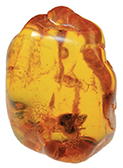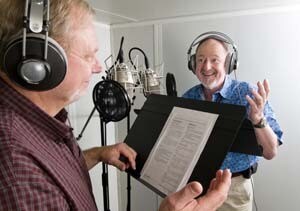Recent Episodes

Dave: Hey Norbert, did you know Lyme disease is on the uptick?
Norbert: Oh boy... (sigh)
Dave: What? (laugh)
Anyway, Lyme disease is a bacterial infection people get through bites from infected ticks. It's the most commonly reported vector-borne illness in the US that's transmitted by a blood sucking arthropod.
Even though we only first identified this disease in 1970, scientists recently found the bacteria in fifteen to twenty million year old amber. That's long before humans walked the earth, so it's a good bet the bacteria infected many ancient organisms. The chunk of amber was found in the Dominican Republic and had trapped four ticks.
Scientists have long studied seeds, leaves, feathers, and insects preserved by tree resin which fossilizes over millions of years and forms amber, a semi-precious stone. Inside these ancient ticks were large populations of the type of bacteria that resemble the modern-day Borrelia bacteria which cause Lyme disease.
They're the oldest fossil evidence associating the arthropods with the bacteria. Though twenty million years seems long ago, bacteria actually arose some 3.6 billion years ago.
Ticks are vectors for a wide variety of microbes that cause disease in animals as well as humans. The oldest reported case of Lyme disease in humans was Oetzi, the well preserved ice mummy who lived 5,000 years ago and was discovered by hikers in the Alps.
Ticks were also found to carry the Rickettsia bacteria as long as one hundred million years ago. It's possible dinosaurs may have been infected with Rickettsia which today causes Spotted Fevers and Typhus fever in humans. Millions of years of co-evolution has left us with highly adapted pathogens that scientists and physician still struggle to understand and treat.
More Information
Lyme Disease
MedlinePlus, a service of the U.S. National Library of Medicine and the National Institutes of Health, has everything you need to know about Lyme disease.
Ancient Lyme Disease Bacteria Found in 15-Million-Year-Old Tick Fossils
"The oldest known evidence of Lyme disease may lie in ticks that were entombed in amber at least 15 million years ago, scientists announced. "
'tzi ' the Iceman
Fascinating site all about 'tzi (aka Oetzi) the iceman

Medicine...
Medicine is constantly advancing – that is a great thing about life in the 21st century. But it doesn’t just happen. Dedicated biomedical scientists are making discoveries that translate into those new medical advances.
Biomedical science is broad, encompassing everything from social science to microbiology, biochemistry, epidemiology, to structural biology and bioinformatics to name just a few areas. And, it can involve basic fundamental biology, the use of AI and chemistry to clinical studies that evaluate new medicines in patients.
No matter the research focus, the goal is always the same, to advance human health. It may take a few months, a few years or for fundamental science, a few decades. Few people make the connection that biomedical science is medicine and that biomedical scientists are working today on the medicine of tomorrow. Our weekly 500-word newspaper columns and 2-minute radio shows and podcasts provide insights into a broad range of biomedical science topics.
Medical Discovery News is dedicated to explaining discoveries in biomedical research and their promise for the future of medicine.





